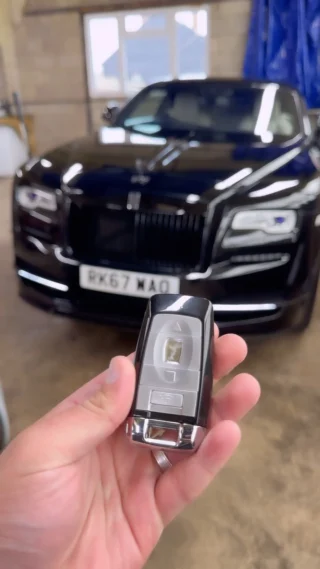Car Key Case Repair: A Comprehensive Guide
The functionality and convenience of car keys have progressed significantly with advancements in technology. As automobiles have actually transitioned from conventional metal keys to sophisticated key fobs and smart keys, the significance of keeping these essential components has actually become paramount. One element that frequently demands attention is the repair of car key cases. This post digs into the complexities of car key case repair, dealing with typical issues, efficient repair approaches, and useful pointers for keeping key durability.
Understanding Car Key Cases
Car key cases are the protective real estates for the electronic elements and battery of car keys. They are developed to secure the internal systems from wear and tear due to day-to-day usage. However, in time and with frequent handling, these cases can become scratched, cracked, or broken, compromising not just the aesthetic appeal but possibly the performance of the key itself.
Common Issues with Car Key Cases
- Fractures and Breaks: The most typical issue emerges from accidental drops or pressure applied to the key.
- Damaged Buttons: Frequent usage can cause the using down of buttons, making it difficult to lock or unlock doors.
- Battery Compartment Damage: If not dealt with properly, the compartment that houses the battery can become loose or misaligned.
- Water Damage: Accidental direct exposure to water or humidity can harm the electronic parts within the key case.
- Cosmetic Damage: Scratches and damages can decrease the total visual of the key case.
| Issue Type | Description | Impact on Functionality |
|---|---|---|
| Cracks and Breaks | Physical damage from drops or pressure | May render the key inoperable |
| Damaged Buttons | Buttons end up being unresponsive or require more force | Problem in operation |
| Battery Compartment Damage | Loose or misaligned compartment impacting battery access | Key may not function at all |
| Water Damage | Exposure to moisture destructive internal electronic devices | Malfunction or brief circuit |
| Cosmetic Damage | Scratches and aesthetic wear | No functional impact, however reduces appeal |
Techniques for Repairing Car Key Cases
Fixing a car key case can vary from DIY solutions to professional services. Here are numerous techniques to consider when confronted with a harmed key case:
DIY Repair Techniques
- Super Glue for Cracks: For small cracks in plastic key fobs, a premium super glue can efficiently bond the split back together.
- Epoxy for Breaks: For more substantial breaks, a two-part epoxy is recommended, supplying a stronger hold after treating.
- Changing Buttons: If buttons are worn, they can in some cases be replaced utilizing button sets readily available online. Alternatively, you can utilize silicone sealant to develop new buttons.
- Cleaning up and Drying: In the occasion of water direct exposure, quickly taking apart the key fob, air-drying the parts, and utilizing rubbing alcohol to clean up might restore the electronic devices.
- Protective Covers: To prevent repeating damage, think about buying a protective silicone case that fits over the key.
Professional Repair Options
When the DIY technique is not ideal or the damage is comprehensive, it may be smart to speak with a professional locksmith or car dealership. Expert services can offer:
- Reprogramming: If electronic components are damaged, reprogramming services can restore lost functionality.
- Key Replacement: In cases beyond repair, a complete key replacement might be required, which frequently includes reprogramming the brand-new key to deal with the vehicle.
- Shell Replacement: Professionals can change the outer shell of the key fob while moving the internal mechanisms securely.
Preventative Measures for Key Longevity
To lengthen the lifespan of car key cases and prevent typical damages, think about the following pointers:
- Avoid Exposing to Moisture: Store keys in a dry environment and avoid leaving them in damp pockets or locations.
- Utilize a Keychain: Attaching your car key to a large keychain can help avoid drops and make it easier to find.
- Minimize Pressure: Be conscious of how much pressure is used to key fobs during usage; prevent resting on keys or putting heavy products on top of them.
- Routine Cleaning: Regularly tidy the key fob and get rid of particles to avoid buildup that could damage buttons and produce extra wear.
Frequently Asked Questions about Car Key Case Repair
Q1: Can I fix a broken key fob myself?
A: Yes, numerous individuals can fix minor damages such as cracks and button replacement using extremely glue or epoxy. Nevertheless, intricate electrical concerns may require expert help.
Q2: How do I know if my key fob needs to be replaced?
A: If the key fob is progressively unresponsive, the battery is routinely passing away in spite of replacements, or if it is physically damaged beyond repair, it may require to be replaced.
Q3: What if water enters into my key fob?
A: Immediately take apart the key, dry it thoroughly, and tidy any parts exposed to wetness. If problems continue, seek advice from an expert.
Q4: How can I prevent damage to my car key?
A: Use a protective case, prevent exposure to moisture, and shop it firmly when not in usage.
Q5: Are there specific tools I require for DIY repairs?
A: Basic tools such as super glue, epoxy, a little screwdriver set, and silicone sealant are typically enough for DIY repairs.
Car key case repair is a necessary ability for any vehicle owner wanting to keep their keys' functionality and look. By comprehending common concerns, using efficient repair methods, and carrying out preventative steps, motorists can ensure their car keys stay in ideal condition for years to come. Whether selecting car key locksmith near me or looking for professional aid, taking the needed steps can considerably extend the life of car keys and keep them running smoothly.

